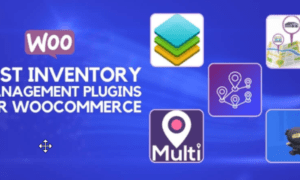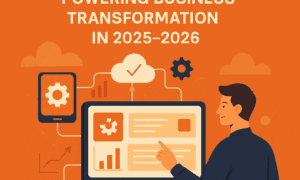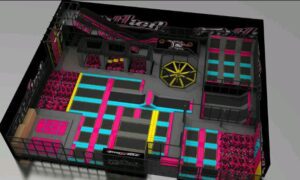A staggering 95% of newly launched products fail, according to G2. Even more concerning is that only 40% of developed products make it to market, and of those, just 60% manage to generate revenue. These alarming statistics highlight the importance of a structured, strategic approach to product development. Without a well-defined process, the risks are high, and the chances of success are slim.
The reality is that a poorly managed development process can lead to costly mistakes, delays, and products that fall short of expectations. Conversely, adopting end-to-end product development services can significantly mitigate these risks, enhance product quality, and increase the likelihood of market success.
In this blog, we’ll dive into why a structured product development process is vital for achieving digital success, backed by statistics and proven methodologies. Whether you’re in the early stages of product ideation or looking to refine an existing product, understanding the value of an end-to-end approach is essential.
What is End-to-End Product Development?
End-to-end product development refers to a complete process that covers the entire lifecycle of a product—from ideation and concept design to development, testing, launch, and ongoing maintenance. This model ensures that the product is continuously refined, aligned with market needs, and can evolve with technology advancements.
Unlike a segmented approach, which involves handling individual stages by different teams, end-to-end product development integrates all stages into a unified, collaborative process. This integration ensures smoother transitions, faster time-to-market, and higher product quality. Key stages involved include:
- Concept and Design: Ideating the product concept and turning it into a prototype.
- Development and Engineering: Building the product with the necessary functionality and performance capabilities.
- Testing and Quality Assurance: Ensuring the product meets the required standards and is free from defects.
- Deployment and Launch: Bringing the product to market, ensuring a successful rollout.
- Maintenance and Upgrades: Continuously improving the product post-launch to meet user feedback and technological advancements.
Why End-to-End Product Development Matters
Incorporating end-to-end product development into your strategy offers numerous advantages for businesses aiming for digital success. Here’s why it’s a game-changer:
- Streamlined Product Lifecycle Management
Product lifecycle management (PLM) refers to managing a product’s entire journey from its inception to retirement. With an end-to-end product development approach, businesses can ensure a seamless flow across all stages of the lifecycle. A unified approach ensures that decisions are made with the broader picture in mind, leading to better resource allocation, improved timeline adherence, and an enhanced focus on market needs.
Moreover, PLM can be effectively implemented using digital tools, such as product lifecycle management software, that track product performance, gather user feedback, and facilitate continuous improvements. These tools integrate with development processes to ensure timely updates, faster response to market changes, and a more adaptive product development strategy.
- Increased Product Adoption
One of the most important goals of product development is ensuring that the final product resonates with users. A holistic, end-to-end approach increases the likelihood of achieving higher product adoption rates. By involving multiple teams in the development process—designers, engineers, product managers, and marketers—you ensure that the product is not only functional but also user-friendly and aligned with market demands.
By focusing on the entire product lifecycle, businesses can address customer pain points early, tailor the product to user needs, and create more targeted marketing strategies for successful product adoption. Furthermore, integrating customer feedback during testing and the early stages of deployment allows for constant refinement, which boosts the product’s appeal and usability.
- Custom Product Engineering for Competitive Advantage
One of the main benefits of adopting end-to-end product development is the ability to tailor the product to meet specific market requirements and business needs. Custom product engineering ensures that the product is built with unique features, robust performance, and scalability. By offering tailored solutions, companies can differentiate their products in the market, address niche customer demands, and create a loyal user base.
Custom engineering also allows for flexibility in adapting to different industries or customer segments, enabling businesses to stay agile and responsive to shifting demands. Whether it’s incorporating specific software integrations or designing unique hardware features, the ability to create a product that stands out is a major competitive advantage.
- Leveraging AI in Product Development
Artificial Intelligence (AI) is revolutionizing product development by enhancing decision-making, accelerating processes, and delivering personalized user experiences. With AI integrated into the development cycle, businesses can make data-driven decisions during the design and testing stages, identify emerging market trends, and optimize resource management.
AI-powered tools help streamline testing and bug detection, making the process faster and more efficient. Machine learning algorithms can also predict how a product might perform in real-world scenarios, allowing teams to make necessary adjustments before the launch. In the long run, AI accelerates product iteration cycles and improves the product’s adaptability to new technologies and consumer preferences.
AI also plays a crucial role in product personalization, helping companies provide tailored experiences for their users. By using data analytics and customer insights, AI can recommend product modifications based on individual preferences, improving customer satisfaction and loyalty.
Key Benefits of End-to-End Product Development
- Faster Time-to-Market
By managing every stage of the product development process, from ideation to deployment, businesses can significantly reduce delays caused by miscommunication or handoffs between different teams. A streamlined, integrated approach results in quicker development cycles and faster product releases, giving businesses a competitive edge in today’s rapidly evolving market. Reducing time-to-market ensures that companies can launch new products ahead of competitors, capturing market share and meeting customer demands more efficiently.
- Enhanced Quality Control
End-to-end product development offers better control over quality by aligning design, development, testing, and deployment stages. This unified process ensures that quality standards are consistently maintained throughout the lifecycle, minimizing the risk of defects and delays in production. Through integrated feedback loops, businesses can address issues early on, preventing costly mistakes later in the development phase. This results in higher product quality and fewer revisions or patches post-launch, ultimately increasing customer satisfaction.
- Improved Collaboration
Collaboration across multiple departments—product, engineering, design, and marketing—ensures that all perspectives are considered throughout the product lifecycle. This multidisciplinary approach fosters innovation and encourages creative problem-solving, leading to a more robust and market-relevant product. End-to-end product development also promotes seamless communication, which reduces bottlenecks and keeps everyone aligned on the same objectives. When teams work together from start to finish, the product becomes more cohesive, offering a better user experience.
- Cost Efficiency
Although the initial investment in end-to-end product development may seem significant, the long-term cost savings are substantial. By preventing issues in the later stages of development, businesses avoid costly revisions and reworks. Additionally, a well-planned development cycle can help businesses better allocate resources, further driving cost savings. With every phase being closely monitored and optimized, you reduce the chances of wasted time or resources, ensuring that the product is developed on schedule and within budget.
- Scalability and Flexibility
End-to-end product development ensures that the product is built with scalability in mind. Whether it’s a tech solution that needs to handle increasing user loads or a physical product that needs to be manufactured in larger quantities, the process accommodates future growth. Teams can design and develop products that are adaptable, scalable, and ready for future iterations. This flexibility is crucial in today’s market, where customer expectations and technological advancements evolve rapidly.
- Minimized Risk of Failure
As highlighted earlier, the failure rate of new products is alarmingly high. However, a structured end-to-end product development process can significantly reduce this risk. By incorporating risk management at every stage—whether it’s evaluating market fit during the design phase or conducting thorough testing before deployment—businesses can identify potential roadblocks early and address them proactively. This comprehensive approach helps ensure the product meets both customer expectations and regulatory requirements, further minimizing the chances of failure.
- Increased Customer Satisfaction and Engagement
A customer-centric approach is at the heart of end-to-end product development. By involving feedback loops early in the design and development stages and continuously gathering insights through testing phases, businesses can ensure that the final product aligns with the needs and expectations of their target audience. This leads to products that are not only high in quality but also resonate deeply with users, leading to higher customer satisfaction and improved customer loyalty. Additionally, products built with user experience in mind are more likely to have higher adoption rates and generate repeat business.
- Data-Driven Insights and Continuous Improvement
Throughout the product lifecycle, businesses gather valuable data from various stages such as user testing, launch performance, and market feedback. End-to-end product development facilitates the integration of these data points into the development process, allowing for continuous improvement. This data-driven approach helps companies make informed decisions about product enhancements, upgrades, or pivots, ensuring that the product continues to evolve in line with user needs and industry trends. It also fosters a culture of innovation, where the product is continuously refined and optimized based on real-world insights.
- Brand Consistency
An integrated product development process ensures that the product remains consistent with the brand’s vision, values, and messaging. From design to deployment, the product reflects the brand identity, making it easier to position in the market and build customer trust. Consistency across product development and marketing strategies contributes to a cohesive brand experience, increasing the likelihood of success in the marketplace.
- Future-Proofing the Product
End-to-end product development ensures that products are built with the future in mind. This is particularly important as technology rapidly evolves. Teams can incorporate the latest technological advancements, such as AI, machine learning, and automation, into the product during the development process. By doing so, the product is better positioned to remain relevant and adaptable to future market demands. Future-proofing the product makes it more resilient, reducing the need for major overhauls and extending its lifecycle in the market.
Why A Dedicated End-To-End Product Development Partner Is Necessary
A dedicated end-to-end product development partner can make a significant difference in the success of a product. Here’s why such a partner is essential:
- Comprehensive Expertise
End-to-end product development requires a wide range of skills—from ideation and design to engineering, testing, deployment, and post-launch maintenance. A dedicated partner brings specialized expertise in each phase, ensuring the product is built to the highest standards without gaps in knowledge.
- Consistency and Alignment
A dedicated partner manages all stages of development, ensuring a consistent vision throughout. This eliminates misalignment between teams and reduces the risk of inconsistencies in design, functionality, or user experience. Every decision made aligns with your business goals and customer needs.
- Faster Delivery
By working with a partner who handles the entire process, you streamline communication and avoid delays typically caused by handoffs between different service providers. This accelerates the product development timeline, allowing you to get to market faster.
- Cost-Effectiveness
When you engage a dedicated partner, you eliminate the overhead of coordinating multiple vendors and services. The partner’s integrated approach often leads to better resource management and cost optimization, making the overall development process more affordable.
- Risk Mitigation
End-to-end partners actively manage risk across all stages of development, from technical issues to market fit. By continuously monitoring progress, they can quickly identify and address challenges, reducing the risk of costly failures or missed deadlines.
- Focus on Innovation
With a dedicated partner handling the product development process, your team can focus on strategic decision-making and innovation. The partner ensures the execution of your vision while freeing you up to concentrate on long-term business goals.
- Ongoing Support and Maintenance
Product development doesn’t end at launch. A dedicated partner offers ongoing support, ensuring your product continues to evolve based on user feedback and market demands. This long-term relationship helps maintain product relevance and performance.
- Scalability and Flexibility
A dedicated product development partner can scale resources as needed. Whether you’re expanding into new markets or incorporating advanced technologies, they have the capacity to adapt and help you grow without disrupting the product’s lifecycle.
How Matellio Can Help You Achieve Digital Success
At Matellio, we specialize in end-to-end product development services that ensure your ideas are brought to life in the most efficient and effective way possible. From initial concept design and custom product engineering to AI-driven development and ongoing product maintenance, we cover all aspects of the product lifecycle.
We take a collaborative approach, working closely with your teams to understand your goals and challenges, and then implement tailored solutions that align with your vision. Our expertise in leveraging advanced technologies, such as AI and machine learning, enables us to deliver products that not only meet user expectations but also drive long-term business success.
Our Expertise Includes:
- Product Conceptualization & Design
- Custom Product Engineering
- AI in Product Development
- Testing, QA, and Deployment
- Ongoing Product Maintenance & Upgrades
By partnering with Matellio, you gain access to a team of experts dedicated to ensuring that your product is built to scale and equipped for the future. Let us help you navigate the complexities of product development and create a solution that maximizes digital success for your business.
Conclusion
In an ever-evolving digital landscape, businesses cannot afford to take a piecemeal approach to product development. Adopting end-to-end product development services not only ensures a seamless process but also contributes to long-term digital success. From increased product adoption to faster time-to-market and custom engineering, this comprehensive approach helps you stay ahead of the competition. By leveraging cutting-edge technologies like AI, you can create a product that meets user needs while driving business growth.
If you’re ready to maximize your product’s potential and achieve success in today’s digital marketplace, Matellio is here to help. Our end-to-end product development services provide everything you need to bring your ideas to life—from design to deployment and beyond. Reach out to us today and take the first step toward maximizing your digital success.



































